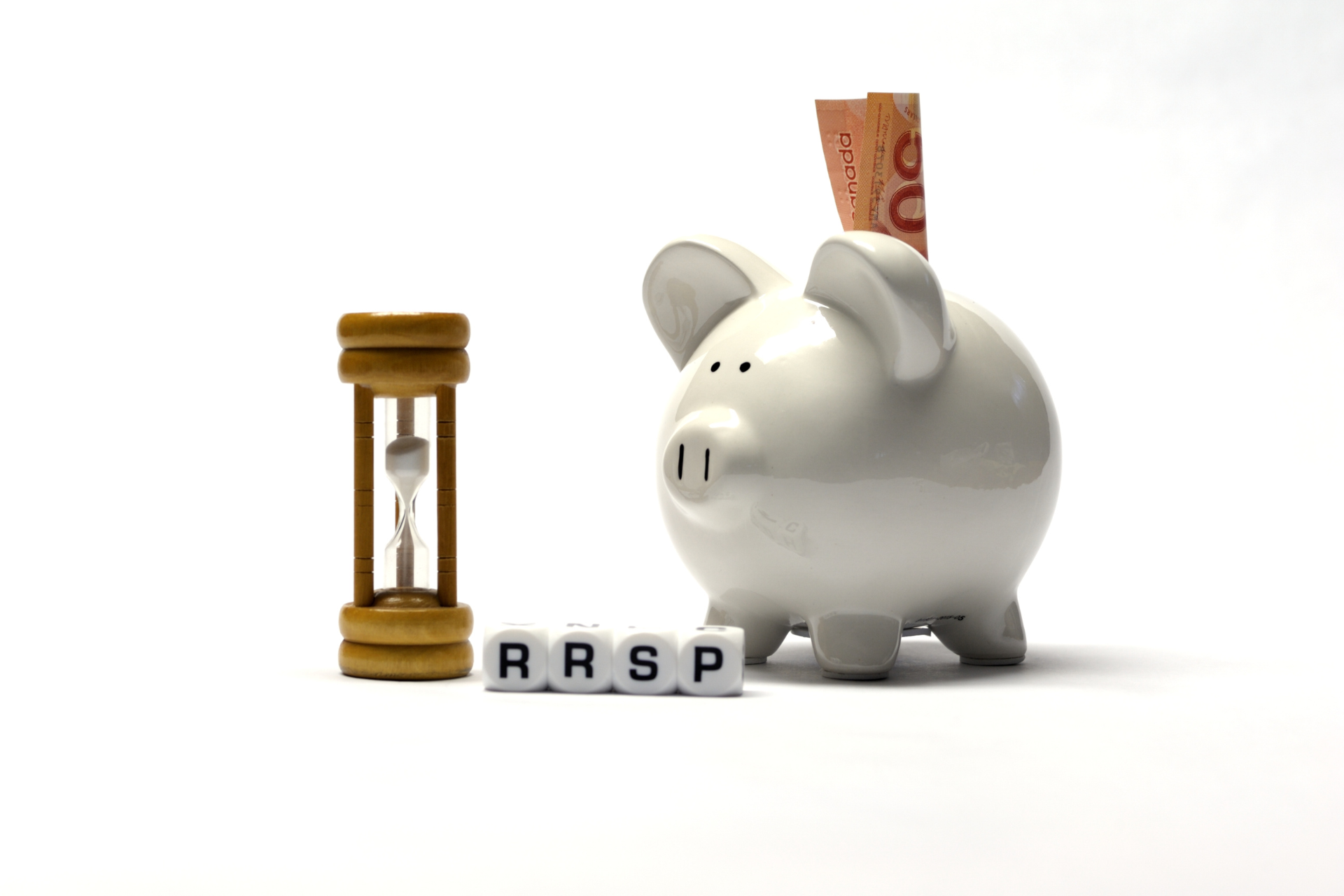How Much Does the Average Canadian Have in RRSP at Retirement?

Saving for retirement is a crucial aspect of financial planning, and Registered Retirement Savings Plans (RRSPs) play a significant role in helping Canadians secure their financial future. Understanding the ins and outs of RRSPs, current trends in contributions, economic factors impacting savings, and strategies for maximizing RRSP savings are essential for individuals looking to build a substantial nest egg for retirement. In this article, we delve into the average amount Canadians have in their RRSPs at retirement and explore key takeaways to help you make informed decisions about your retirement savings.
Key Takeaways
- Starting early and leveraging the power of compound interest can significantly boost your RRSP savings over time.
- Diversifying investments within your RRSP can help mitigate risk and maximize returns.
- Taking advantage of government programs and tax incentives can enhance your RRSP contributions.
- Estimating your RRSP at retirement allows you to set realistic savings goals and plan for your financial future.
- Understanding withdrawal strategies and tax implications is crucial for effectively managing your RRSP funds during retirement.
Understanding RRSPs and Their Importance for Canadians
What is an RRSP?
An RRSP, or Registered Retirement Savings Plan, is a tax-deferred retirement savings vehicle available to individuals in Canada. It allows Canadians to save for their retirement on a tax-preferred basis, meaning that contributions to an RRSP are deductible from income for tax purposes, potentially reducing the amount of tax one pays in the year of contribution.
Contributions to an RRSP can grow tax-free until withdrawal. This means that any investment income, dividends, or capital gains earned within the RRSP are not taxed as long as they remain in the plan. However, upon withdrawal, the funds are taxed at the individual's marginal tax rate.
- The contribution limit for an RRSP is determined by 18% of the individual's earned income from the previous year, up to a maximum limit set by the government.
- Unused contribution room can be carried forward to future years, allowing for flexibility in savings.
- There are various types of investments that can be held within an RRSP, including stocks, bonds, mutual funds, and GICs.
It's important to note that RRSPs are not just savings accounts; they are investment accounts that can hold a variety of financial products. This allows for the potential of higher returns compared to traditional savings accounts, which is crucial for building a retirement nest egg.
Benefits of Investing in RRSPs
Investing in Registered Retirement Savings Plans (RRSPs) offers several advantages that can significantly enhance an individual's financial readiness for retirement. Tax deferral is a primary benefit, allowing contributors to deduct their RRSP contributions from their taxable income, thereby reducing their immediate tax burden.
- Tax-sheltered growth: The investments within an RRSP grow tax-free until withdrawal, which can lead to substantial growth over time due to compound interest.
- Income splitting: RRSPs can facilitate income splitting in retirement, potentially lowering the overall tax rate for couples.
- Home Buyers' Plan (HBP): RRSPs can be used towards the purchase of a first home, making it a versatile tool for long-term financial planning.
By strategically planning contributions and taking advantage of the RRSP's flexibility, Canadians can build a robust nest egg for their golden years. This proactive approach to retirement planning can provide peace of mind and financial security.
How RRSPs Contribute to Retirement Security
RRSPs, or Registered Retirement Savings Plans, are a cornerstone of retirement planning for Canadians. By allowing individuals to defer taxes on contributions and investment growth until withdrawal, RRSPs provide a tax-advantaged way to accumulate wealth for the golden years.
The primary way RRSPs contribute to retirement security is through the creation of a financial cushion that can supplement other income sources such as the Canada Pension Plan (CPP) and Old Age Security (OAS). This is particularly important as life expectancies increase and the duration of retirement extends.
- Consistent contributions over one's career can lead to significant savings due to the power of compound interest.
- The flexibility to invest in a variety of assets within an RRSP allows for tailored investment strategies that can adapt to changing market conditions and personal risk tolerances.
- The ability to split income with a spouse or common-law partner in retirement can result in tax savings and a more efficient use of retirement funds.
By integrating RRSPs into their broader financial plan, Canadians can approach retirement with greater confidence, knowing they have a dedicated source of funds specifically earmarked for their later years. This sense of financial security is invaluable, as it allows retirees to enjoy their retirement with fewer financial worries.
Current Trends in RRSP Contributions
Average Annual Contributions
The average annual contribution to an RRSP can vary widely among Canadians, influenced by factors such as income levels, financial priorities, and life stages. Statistics Canada reports that the median RRSP contribution for the tax year was around $3,000. However, this figure does not capture the full picture, as there is a significant disparity in contributions across different income brackets.
- High-income earners tend to contribute more to their RRSPs, often maximizing their contribution limit.
- Middle-income Canadians may contribute a moderate amount, balancing other financial commitments.
- Lower-income individuals often face challenges in contributing regularly to RRSPs due to more immediate financial pressures.
It's crucial for Canadians to consider their individual retirement goals and financial situations when determining their own RRSP contribution levels. Consistent contributions over time, even if they are not the maximum allowed, can significantly impact the growth of retirement savings due to the power of compound interest.
Factors Influencing Contribution Levels
Several factors play a crucial role in determining how much Canadians contribute to their RRSPs annually. Income level is perhaps the most significant, as higher earners typically have more disposable income to allocate towards retirement savings. Other key factors include:
- Age and proximity to retirement
- Financial literacy and awareness of RRSP benefits
- Life events such as marriage, home purchase, or child-rearing
Employment status also impacts RRSP contributions, with full-time employees often having access to employer-sponsored plans that can boost their savings. Additionally, economic conditions, such as a recession, can reduce individuals' ability to save.
It's essential for Canadians to understand these factors and consider them when planning their retirement savings strategy to ensure they are making the most of their RRSP contributions.
Comparing Across Different Age Groups
When examining RRSP contributions across different age groups, distinct patterns emerge. Younger Canadians, typically in their 20s and 30s, often contribute less to their RRSPs due to lower income levels and competing financial priorities, such as student loans or saving for a home.
- Individuals in their 40s and 50s usually increase their contributions as their earnings grow and they become more focused on retirement planning.
- Those approaching retirement age, the 60s, may maximize their contributions to take full advantage of unused contribution room and to catch up on their retirement savings.
It's crucial for Canadians to understand how their age and career stage influence their ability to save for retirement through RRSPs. Adjusting contribution levels over time can help ensure a more comfortable retirement.
The disparity in contribution levels among age groups highlights the need for tailored financial advice and planning. As Canadians progress through different life stages, their financial strategies should evolve to align with changing goals and capacities.
The Impact of Economic Factors on RRSP Savings
Inflation and Its Effects on Savings
Inflation is a critical economic factor that can erode the purchasing power of savings over time. For RRSP holders, understanding the impact of inflation is essential to ensure that their retirement funds maintain their value in real terms.
- Persistent inflation can diminish the real value of fixed-income investments, which are common in many RRSP portfolios.
- Inflation can also influence the types of assets held within an RRSP, with a shift towards those that traditionally outpace inflation, such as equities.
- It's important for savers to consider the inflation rate when calculating their retirement needs and the expected real return on their RRSP investments.
Adjusting investment strategies to account for inflation can help preserve the purchasing power of RRSP savings, ensuring that retirees have sufficient funds to maintain their standard of living.
Interest Rates and Investment Growth
Interest rates play a pivotal role in the growth of RRSP investments. As rates fluctuate, so does the potential for earnings on savings and fixed-income investments within an RRSP. Higher interest rates can lead to more substantial growth over time, especially when compounded.
- When interest rates are low, investors may seek higher returns through riskier assets.
- Conversely, high interest rates can boost returns on safer investments like bonds.
- It's crucial to adjust investment strategies in response to interest rate changes to optimize RRSP growth.
Adjusting one's investment portfolio to align with the current interest rate environment is essential for maximizing the growth potential of RRSP savings.
Employment Trends and Saving Capacities
The capacity to save for retirement through an RRSP is closely tied to one's employment status and income level. Economic downturns and shifts in the job market can significantly impact the ability to contribute to retirement savings.
- Job stability allows for consistent RRSP contributions, building a more substantial retirement fund over time.
- Conversely, periods of unemployment or underemployment can lead to gaps in contributions, potentially reducing the final RRSP balance at retirement.
- Career advancements and salary increases typically enable higher annual contributions, accelerating the growth of retirement savings.
The interplay between employment trends and RRSP savings is a critical factor in determining the financial readiness of Canadians for retirement. Understanding this relationship can help individuals plan more effectively for their future.
Strategies for Maximizing RRSP Savings
Starting Early: The Power of Compound Interest
One of the most effective strategies for maximizing RRSP savings is to start contributing early in one's career. The power of compound interest means that the earlier you start saving, the more your money will grow over time.
- Begin by setting up regular contributions, even if they are small, as soon as you start earning an income.
- Increase your contributions gradually as your income grows.
- Reinvest dividends and interest to take full advantage of compounding.
By starting early, you not only give your investments more time to grow but also develop a habit of saving, which is crucial for long-term financial security. Consistency and time are key allies in building a substantial RRSP fund.
Diversifying Investments Within RRSPs
Diversification is a cornerstone of prudent investment strategy, especially within an RRSP. By spreading investments across different asset classes, such as stocks, bonds, and real estate, Canadians can mitigate risk and enhance the potential for returns. A well-diversified RRSP can weather market volatility better than a portfolio concentrated in a single sector or asset class.
- Stocks offer growth potential but come with higher risk.
- Bonds provide steady income and are generally less volatile.
- Real estate investment trusts (REITs) can offer both income and growth, along with diversification benefits.
Diversification not only helps in balancing the risks but also aligns your retirement portfolio with your changing risk tolerance as you approach retirement. It's essential to review and adjust your RRSP investments periodically to maintain a balanced approach that reflects your current financial goals and market conditions.
Utilizing Government Programs and Tax Incentives
The Canadian government offers a variety of programs and tax incentives designed to encourage individuals to save for retirement through RRSPs. Taking full advantage of these can significantly enhance your retirement savings.
- The Home Buyers' Plan (HBP) allows first-time homebuyers to withdraw up to $35,000 from their RRSPs tax-free to purchase or build a home, provided they repay the amount within 15 years.
- The Lifelong Learning Plan (LLP) permits RRSP holders to withdraw funds for education or training for themselves or their spouse, with the condition of repayment over a period of time.
- Tax deductions for RRSP contributions reduce taxable income, effectively deferring the tax until retirement when you may be in a lower tax bracket.
By strategically planning RRSP contributions and withdrawals around these government incentives, individuals can optimize their tax situation and bolster their retirement funds.
It's important to stay informed about the annual contribution limits and any changes to tax laws that may affect RRSPs. Consulting with a financial advisor can help ensure that you are making the most of these opportunities and are on track to meet your retirement goals.
Preparing for Retirement: What to Expect from Your RRSP
Estimating Your RRSP at Retirement
To estimate the amount you may have in your RRSP at retirement, it's essential to consider several factors that influence the growth of your savings. Your current age, the age at which you plan to retire, and the amount of your regular contributions all play a pivotal role in this calculation.
- Start by determining your current RRSP balance and annual contribution amount.
- Factor in the expected rate of return on your investments, which can vary based on the types of assets held within your RRSP.
- Consider any potential changes in your income that could affect your ability to contribute in the future.
Remember, the power of compound interest means that even small, regular contributions can grow significantly over time, making it crucial to maintain a consistent investment strategy.
By using online calculators or consulting with a financial advisor, you can get a clearer picture of your projected RRSP balance at retirement. This estimate will help you assess whether you are on track to meet your retirement goals or if you need to adjust your savings plan.
Withdrawal Strategies and Tax Implications
When it comes time to withdraw funds from your RRSP, understanding the tax implications is crucial. Withdrawals are taxed as income at your marginal tax rate in the year they are taken out, which can significantly affect your retirement finances. Planning the timing and amount of withdrawals is key to minimizing the tax burden.
- Determine your expected retirement income from all sources to estimate your tax bracket.
- Consider converting your RRSP to a Registered Retirement Income Fund (RRIF) or purchasing an annuity for regulated payments.
- Withdraw more in years with lower income to reduce taxes.
It's important to remember that the government mandates minimum withdrawals from an RRIF starting at age 71, which may influence your strategy.
By spreading out withdrawals over multiple years, you can potentially stay in a lower tax bracket and preserve more of your savings. Consulting with a financial advisor can help tailor a withdrawal strategy that aligns with your retirement goals and tax situation.
Transitioning from Saving to Spending
As retirement approaches, the shift from accumulating assets to strategically drawing them down becomes a critical phase. Understanding the nuances of RRSP withdrawal is key to maintaining financial stability in retirement.
- Determine the amount you will need annually to support your lifestyle.
- Consider the tax implications of your withdrawal amounts.
- Align your RRSP withdrawals with other income sources to optimize tax efficiency.
Transitioning from saving to spending involves not just financial adjustments, but also a psychological shift as you start using the funds you've worked hard to save.
It's advisable to consult with a financial advisor to create a personalized withdrawal strategy that considers your unique circumstances. This strategy should be flexible enough to adapt to changing economic conditions and personal needs over the course of your retirement.
Frequently Asked Questions
WEB:
bellvest.ca/family-wealth-calgary
E-MAIL: dan.beyaert@bellvest.ca
Phone: 403-508-1516
Fax:
403-231-8631












